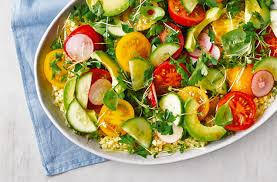
What is Perimenopause?
Perimenopause is the time period leading up to menopause and lasts, on average, for 4 years. Some women may be in this stage for just a few months, whilst for others it can last for up to 10 years (1).
The onset of perimenopause often begins in a woman’s 40’s, however some women enter in their late 30’s and other women, their early 50’s. The average age of onset is around 45 years.
During perimenopause there is a fluctuation in oestrogen and progesterone levels and the body naturally begins to make less oestrogen. This decline in oestrogen continues until menstruation ceases entirely.
Menopause is defined as being reached 12 months after a woman has her last menstrual period and usually happens between the ages of 40-58 (2). The average age of menopause in the United Kingdom is 51.
Symptoms of Perimenopause
It is the decline in oestrogen that is the driver behind most of the symptoms associated with perimenopause. These symptoms vary for individual women but include:
- Hot flushes
- Nights sweats
- Irregular menstrual periods
- Vaginal dryness and discomfort during sex
- Insomnia and difficulty sleeping
- Low mood, depression and anxiety
- Loss of libido or reduced sex drive
- Loss of memory and poor concentration
- Loss of bone density and muscle mass
- Loss of skin elasticity and tone
How Can Nutrition Help with Perimenopause?
Perimenopause is a time when the body is going through numerous changes so nutrient requirements alter too. A diet high in quality protein, whole grains, legumes, vegetables, fruits, nuts, seeds and healthy fats may help to reduce the symptoms of perimenopause.
Phytoestrogens for Hormonal Health
Phytoestrogens are a natural compound found in some plants and plant-based foods. They may provide a number of health benefits when consumed as part of a varied diet due to their oestrogenic properties (3, 4).
When dietary phytoestrogens are eaten, the body’s own oestrogen receptors treat them as if they were oestrogen produced by the body. This is because their chemical structure is very similar to human oestrogen.
This is significant for women entering perimenopause because consuming a diet high in phytoestrogen-rich foods can help bridge the gap between falling oestrogen levels, the decline in oestrogen production, and the symptoms that arise from this.
Foods highest in phytoestrogens include soya (edamame) beans, soya derivatives (tofu, tempeh, miso, soya milk, soya yogurt, soya flour), flaxseeds (linseeds), sesame seeds, whole grains, legumes, berries, apples, carrots and dried fruit.
Different types of phytoestrogen include isoflavones (found in soya, legumes and nuts), coumestans (found in sprouted legumes) and lignans (found in linseed, grains, vegetables and fruits).
Soya is unique in that it contains the highest concentration of isoflavones, a type of phytoestrogen that mimics human oestrogen. Isoflavones may help reduce hot flushes (5) and reduce breast cancer risk (6).
Gut bacteria break down these isoflavones into their more active forms genistein and daidzein. Not all women have the specific gut bacteria to metabolise isoflavones (7, 8) however eating more high fibre foods can increase gut bacteria diversity.
To achieve the beneficial effects of phytoestrogens, women should aim to eat the equivalent of 50mg of isoflavones a day. This can be achieved by eating 200mg tofu, 100-150g of tempeh, 750ml soya milk, or 100g of soya (edamame) beans.
To increase overall daily phytoestrogen intake, try switching to soya milk (which is also fortified with calcium and a good source of protein), add edamame beans to soups and salads, add tofu to stir-fries and curries, and eat more plant-based foods.
Phytoestrogen supplements are available, but more research is needed to determine if they have similar health risks associated with synthetic hormone replacement therapy and should be given the same careful consideration.
Protein for Muscle Mass and Supple Skin
With the decline in oestrogen, muscle mass decreases and skin begins to lose its elasticity. Women may notice that it’s harder to maintain lean, firm muscle mass than before the onset of perimenopause.
Protein is essential for building muscle but the natural physiology of aging resists the formation of new muscle. However, eating adequate high-quality protein coupled with regular physical activity can help counteract this resistance.
Daily protein requirements increase in all women over the age of 50 from the standard adult recommendation of 0.8 grams of protein per kilogram of body weight to 1.2 grams of protein per kilogram of body weight.
To put this into context, the protein requirements for a woman turning 50 and weighing 10 stone would jump from 50 grams of protein per day to 72 grams of protein per day.
To conserve muscle mass and skin integrity, all women going through perimenopause should consider increasing their protein intake since it is also the decline in oestrogen that impacts muscle mass and not just advancing age.
Aim to eat a portion of protein with every meal. For example, adding 2 eggs at breakfast, a tin of tuna with pulses at lunchtime, chicken with lentils for dinner, plus plain yogurt and a glass of soya milk should easily meet daily protein needs.
With fluctuating hormones, achieving balance is the name of the game. Adequate protein can help to regulate appetite and blood sugar levels. It will also help balance hormone levels too.
Omega-3 Fatty Acids for Low Mood and Depression
Studies show that a diet containing omega-3 fatty acids is associated with reduced inflammation, improved mood and decreased depression in perimenopausal women although more research is needed (9).
To increase intake of omega-3 fatty acids, aim to eat two servings of oily fish (salmon, sardines, mackerel, trout or pilchards) per week. Another option is to add flaxseeds or flaxseed oil to the diet to help combat moods swings and irritability.
Calcium, Magnesium and Vitamin D for Bone Health
There is a strong link between osteoporosis and the menopause (10) so it is important to ensure adequate intake of calcium, magnesium and vitamin D as these three nutrients working synergistically to promote bone health and decrease bone loss.
The recommended daily amount of calcium is 700mg and this can be obtained from the diet by including dairy foods, green leafy vegetables, soya beans, nuts (especially almonds), seeds and tinned bony fish such as sardines and pilchards.
Vitamin D is known as the sunshine vitamin because the body’s main source is via sunlight. Vitamin D is not present in many foods so Public Health England recommend a daily supplement of 10mcg (400IU) from October to April to ensure adequate intake.
Magnesium is a mineral that is abundant in green leafy vegetables, avocado, legumes (lentils, beans, chickpeas, peas), wholegrains, nuts, seeds, tofu, oily fish, dark chocolate and bananas.
Not only is magnesium important for bone health, it also promotes sleep, regulates the body clock (11), reduces symptoms associated with premenstrual syndrome and balances mood (12, 13).
Fibre for Digestion, Gut Health and Weight Management
Fibre is food for your gut microbes and should be a staple during perimenopause. Eating more fibre supports a healthy digestive tract, promotes satiety and encourages weight-loss, which can be harder as metabolism naturally slows down.
Evidence suggests that high fibre foods decrease the risk of heart disease, stroke, type 2 diabetes and bowel cancer (14, 15). Most women in the UK do not meet the recommended intake of 30g fibre per day. The average intake is just 18g per day.
Aim for fibre-diversity and eat a range of plant-based foods for optimal intake. Whole grains, lentils, peas, beans, vegetables, fruits, nuts and seeds are all good sources of fibre. The more processed a food item is, the less fibre it will offer.
Iron for Increased Menstrual Loss, Fatigue and Anxiety
Periods can become erratic and heavier during perimenopause and just one or two really heavy bleeds with clotting can impact iron stores and cause iron deficiency with or without anaemia (16, 17).
Iron deficiency symptoms are similar to perimenopausal symptoms. However, if there is an increase in fatigue, feeling cold, heart palpitations, sore tongue, anxiety or hair loss, it’s sensible to get iron levels checked via a GP blood test.
Supplements to correct iron deficiency are available via your GP or over the counter. However, some GP-prescribed iron tablets can cause digestive issues so it’s worth considering alternatives like Floradix or Spatone which are gentler on the stomach.
It’s important to get plenty of iron from the diet to replace iron lost via heavier menstrual periods. Iron is available as haem and non-haem iron. Haem iron is only found in animal sources and is easily absorbed by the body. Non-haem iron is found in plant-based foods but is not so easily absorbed.
Good sources of haem iron include organ meats (such as liver, kidney and heart), black pudding, red meat (such as beef, pork and lamb), tinned mackerel/ pilchards/sardines, fish, shellfish, pate, poultry and eggs.
Non-haem iron sources include wholegrain cereals, spinach, leafy green vegetables, legumes (especially chickpeas, soy beans and black beans) lentils, seeds (especially pumpkin and sesame seeds), dried fruit (especially prunes, figs and raisins) and fortified breakfast cereals.
The recommended daily intake of iron is 14.8mg for women aged 19-50 and 8.7mg aged over 50. Requirements for iron drop significantly once menopause is reached and menstruation ceases. At this point supplements should be stopped to prevent iron overload.
B Vitamins for Mood and Memory
Memory problems, low mood and brain fog are common and often debilitating symptoms of perimenopause. Studies show that vitamins B6, B12 and folate may help support cognitive function and reduce stress, (18, 19). Getting enough B vitamins may also lower the risk of developing dementia (20).
Aging causes a natural decline in the production of intrinsic factor which the body produces to convert vitamin B12 into its active form. Some women may find they become B12 deficient even though they are getting an adequate dietary supply.
Therefore, vitamins B6, B12 and folate as part of a vitamin B-complex supplement may help to reduce symptoms of poor memory and focus. It is important to take B vitamins as part of a complex because B vitamins work together synergistically.
Vitamin B6 is found in a wide variety of foods and the richest sources include fish, liver and other organ meats, poultry, starchy vegetables, fruit (other than citrus) and fortified foods such as breakfast cereals and flours.
Vitamin B12 originates from bacteria, fungi and algae, and is present in virtually all animal tissues. Plants contain no vitamin B12 beyond that derived from microbial contamination.
Good sources of vitamin B12 include organ meat such as liver, kidney and heart, red meat, poultry, fish, eggs, dairy products and fortified foods such as breakfast cereals, Marmite, Bovril and dairy-alternative milks.
Folate is found naturally in wholegrain cereals, yeast, liver, asparagus, brussels sprouts, broccoli, leafy green vegetables, peas, beans, peanuts, citrus fruits, bananas, papaya, tomatoes and beer
Foods to Limit or Avoid to Reduce Perimenopausal Symptoms
Caffeine and Alcohol
Both caffeine (21) and alcohol (22) can make perimenopausal symptoms worse so try to moderate intake of caffeinated drinks like coffee, tea and colas or choose decaffeinated drinks.
Drink alcohol in moderation and try not to exceed more than two to three units per day. Avoid alcohol altogether if it makes perimenopausal symptoms worse. Also consider that drinking alcohol increases the risk of developing breast cancer (23,
24).
Sugar, Salt, Saturated Fats and Processed Foods
Processed foods and added sugars are known to raise blood sugar rapidly. Studies show that high blood sugar is linked to a higher incidence of hot flushes in perimenopausal women (25, 26, 27).
Too much saturated fat from animal and dairy products increases the risk of heart disease and raises blood cholesterol levels (28). High saturated fat intake is also linked to lower serotonin levels which can lead to low mood and depression (29).
A high salt intake has been linked to lower bone density in postmenopausal women. Additionally, after menopause, the decline in oestrogen increases the risk of developing high blood pressure. Reducing sodium intake may help lower this risk (30).
Therefore, limiting dietary intake of added sugars, salt, saturated fats and processed foods, such as white bread, pastries, cakes, biscuits, baked goods, and cured or highly processed meat may help reduce symptoms of perimenopause.
Summary
Perimenopause is linked to fluctuating hormones, altered metabolism, weight gain, reduced bone density, reduced muscle mass, increased risk of heart disease and certain cancers.
Additionally, many women going through perimenopause experience unpleasant symptoms such as hot flushes, low mood, poor memory, insomnia, irregular periods, difficult concentrating and changes in muscle and skin tone.
A whole-foods diet high in fruits, vegetables, whole grains, and high-quality protein may reduce perimenopausal symptoms. Phytoestrogens and healthy fats, such as omega-3 fatty acids from fish, may also help.
Limiting added sugars, salt, saturated fat, processed carbohydrates, alcohol and caffeine may also help to manage symptoms. These simple dietary changes may make this natural biological transition easier to manage and improve quality of life.



